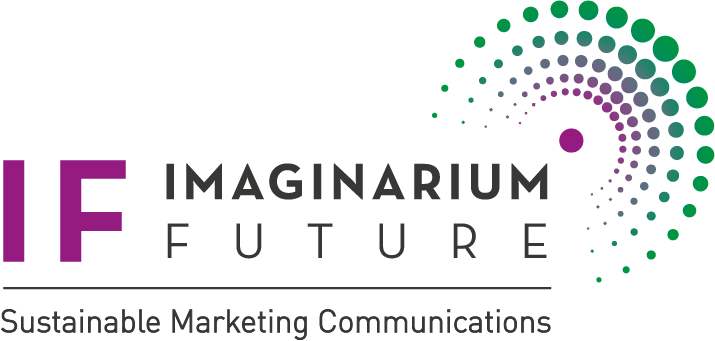Latest News
AI, love and logos
1st September 2023
AI has had a significant influence on logo development in various ways, offering many benefits. But we should not forget that algorithms work off data. That data is ‘historical’ leading to the accusation that copying or replication of a style is easy with AI while true innovation in design is still the preserve of humans.
Interestingly at an agency like IF, you are championing the future, but you cannot ignore the past influence of a company’s logo.. Individual inspiration for change from an agency also needs a client who is on the same wavelength. Or turning it on its head you need some high level of trust that the creatives in the agency are putting forward something your target customer will ultimately grow to love. Change is sometimes not appreciated by some brands..hence just a tweak..tidying up of a logo.
You might say that AI does not love. That passion for the future direction of the company logo requires human inspiration and interaction. Warm flesh therefore over silicon chips.
Below is a list of advantages of logo development produced by AI. It is not half bad. The AI also throws up the caveat of its shortcomings….which it calls challenges.
What AI concludes:
1. Design Inspiration and Ideation:
• Generative Design: AI algorithms can generate a multitude of design ideas based on input criteria, helping designers explore a wider range of possibilities.
• Image Recognition: AI-powered tools can analyze vast databases of images to identify design trends, helping designers stay current and inspired.
2. Design Efficiency:
• Automated Design: AI can assist in automating repetitive design tasks, such as resizing logos for different platforms or creating variations of a logo for A/B testing.
• Quick Prototyping: AI tools can rapidly create logo prototypes based on user input, saving time during the initial design phase.
3. Personalization:
• User Data Analysis: AI can analyze user data to understand customer preferences and behaviour, allowing for more personalized and effective logo designs.
• Dynamic Logos: AI can enable logos to adapt and change based on user interactions or contextual factors.
4. Design Enhancement:
• Image Editing: AI-powered image editing tools can help refine and enhance logo designs, improving aspects like colour balance, contrast, and overall aesthetics.
• Style Transfer: AI can apply various artistic styles to logos, giving designers and clients a range of creative options.
5. Feedback and Testing:
• A/B Testing: AI can assist in conducting A/B tests to determine which logo variant resonates better with the target audience.
• Sentiment Analysis: AI can analyze social media and online feedback to gauge public sentiment about a logo design.
6. Copyright and Plagiarism Detection:
• AI algorithms can help designers and companies identify potential copyright issues by comparing logo designs to existing trademarks and patents.
However, it’s important to note that AI in logo design is not without challenges:
1. Lack of Creativity: AI can generate designs based on existing patterns and data, but it may struggle with truly innovative and unique concepts that require creative intuition.
2. Overreliance on AI: Depending too heavily on AI can lead to generic and uninspiring designs that lack a human touch.
3. Ethical Considerations: The use of AI in logo design should be mindful of ethical concerns, such as potential bias in AI algorithms or the ethical implications of automating certain design decisions.
4. Designer-Client Relationship: While AI can streamline the design process, it shouldn’t replace the essential collaboration and communication between designers and clients.
In summary, it is still very difficult to create designs that are truly different… but then you have to appreciate that as blandness becomes a norm with more AI-inspired design the very nature of design itself might change. The clients who are employing the likes of IF to come up with design will need to be a certain maverick group who can detach themselves and embrace less corporatism and more entrepreneurial flair.
This flair can be represented by something being colourful and full of life, corporatism in contrast is dull and robotic, unfeeling. Efficient yes but not different.
So ‘art’ and love may hold out as the last bastions of those who want to create logos with cut-throughs that make sense to their employees, customers and stakeholders. We talk of disruption and guerilla marketing…almost the antithesis of stability and the algorithm that averages out.
There are many contrasts in considering the fast-moving influence of AI on logo development. I do not know how the new logo for Twitter came about, but on the surface, you can see that it rides roughshod over the norms and I cannot think its invention was complex. It simply came from an omnipotent human effectively saying ‘I like it’…and then saying to a select group of other humans who are effectively ‘yes men’ that we should go with it.
One could argue that the logo is literally stripping away all the colour to create a brand that appeals to a logical calculating mind but lacks the vibrancy and freedom that Twitter used to represent.
It shows a white “X” on a black background. The logo represents Twitter’s plan to become an all-in-one “everything-app,” which means it wants to do many different things in one place. With this Twitter New Logo, Twitter wants to show that it is changing and becoming more innovative.
Would people think that a white X is innovative?
We say ‘less is more’.
Maybe not in this case.
David Jackson
